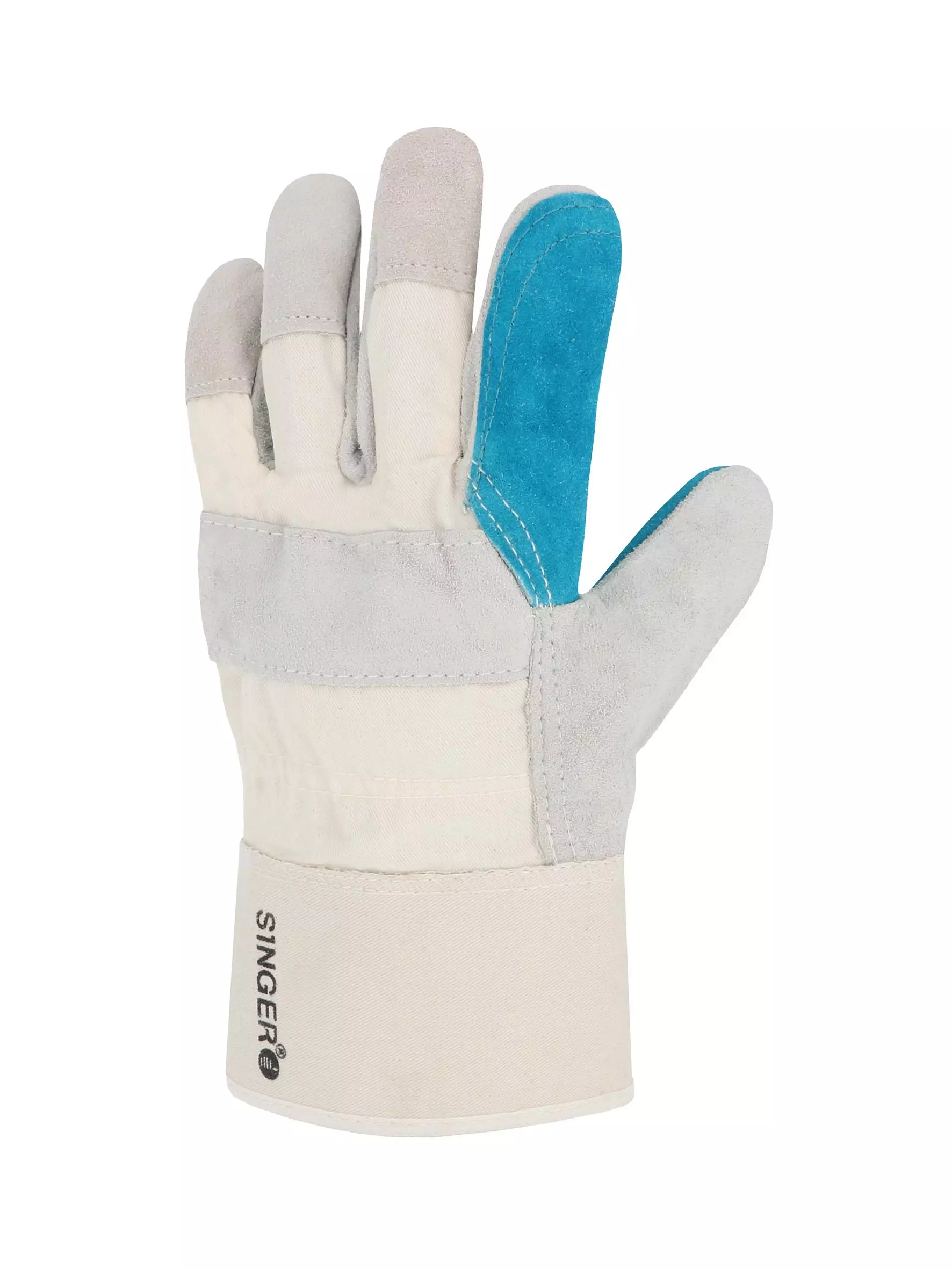

Features You'll Love

Support · Reinforced Palm
EN 388 · Tear Resistance Level 2, Puncture Resistance Level 2, Abrasion Resistance Level 3
Identifies areas of the glove with additional reinforcement for enhanced protection and durability in high-wear zones.
Offers moderate resistance against snagging or catching on rough objects, preventing small rips from growing.
Withstands moderate force from sharp objects like heavy-duty splinters or wires.
Provides good resistance against scraping, scratching, and rubbing on rough or abrasive surfaces.
Singer Safety
Leather Gloves, Size 10, 10 pairs
Leather Gloves, Size 10, 10 pairs
5 / 5
38,40 €
Price per 10 pairs
3,84 € / pair
Choose size
Shipping fee is 7,95 € for orders under 80,00 €
Features You'll Love

Support · Reinforced Palm
EN 388 · Tear Resistance Level 2, Puncture Resistance Level 2, Abrasion Resistance Level 3
Identifies areas of the glove with additional reinforcement for enhanced protection and durability in high-wear zones.
Offers moderate resistance against snagging or catching on rough objects, preventing small rips from growing.
Withstands moderate force from sharp objects like heavy-duty splinters or wires.
Provides good resistance against scraping, scratching, and rubbing on rough or abrasive surfaces.
Product description
This heavy-duty protective glove features a superior cowhide split leather palm with green split leather reinforcements on critical areas for enhanced durability. Designed for demanding applications, it combines a thick cotton lining for comfort and moisture absorption with a rubberized cuff for added protection and quick removal. The American-style docker model includes elastic tightening on the back and leather reinforcement tabs at joint areas for improved flexibility and protection.
Product Features:
- Superior cowhide split leather palm with double thickness for durability
- Green split leather reinforcements on palm, thumb, and index finger
- Flared safety cuff for quick glove removal
- Thick cotton lining for comfort and sweat absorption
- Leather tabs and reinforcement bar at joints
Technical Details:
- White cotton canvas back and cuff
- Rubberized cuff for enhanced protection
- Elastic tightening on the back
- American-type assembly (docker model)
- EN 388 certification with 3122X protection levels
Recommended Applications:
- Heavy handling in dry environments